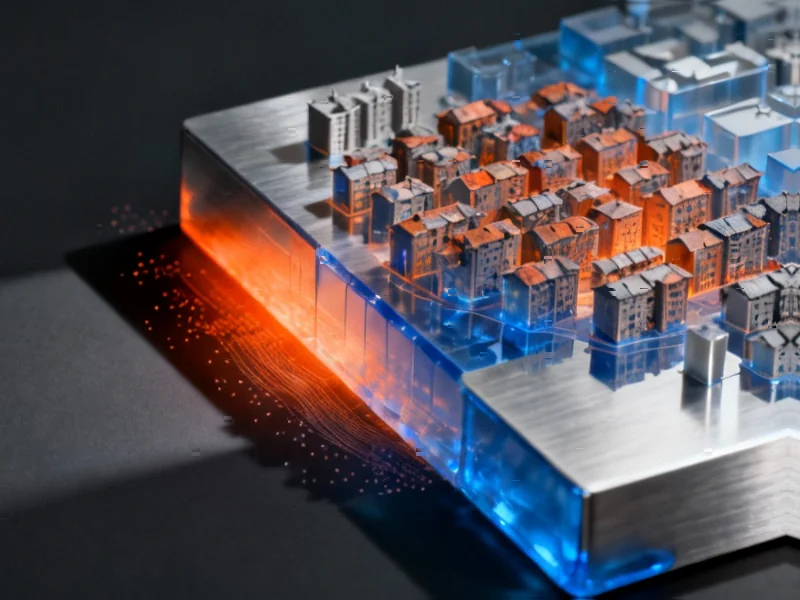Orbital Computing Breakthrough
NVIDIA is taking artificial intelligence capabilities beyond Earth’s atmosphere through a groundbreaking partnership with AI startup Starcloud, according to reports. The collaboration marks the first serious effort to establish data centers in space, with initial deployment scheduled aboard the Starcloud-1 satellite. Sources indicate this 60-kilogram platform will carry NVIDIA’s powerful H100 GPU, delivering what analysts suggest could be approximately 100 times the computing performance of current space-based systems.
Table of Contents
Solar-Powered Space Infrastructure
The project’s energy solution represents one of its most innovative aspects, the report states. Instead of relying on Earth’s limited power resources, the orbital data center will harness continuous solar energy through massive arrays. According to technical documents, Starcloud’s ultimate vision involves constructing a gigawatt-scale orbital facility powered by solar panels stretching 4 kilometers on each side. This approach reportedly eliminates the need for batteries, fuel, or backup generators since the satellite maintains constant exposure to sunlight while in orbit.
Revolutionary Cooling Technology
Perhaps the most significant innovation lies in the thermal management system. Modern data centers typically require extensive cooling infrastructure using fans, water, or other liquids, but the space-based approach fundamentally changes this equation. According to reports, the Starcloud-1 satellite will employ what NVIDIA describes as “cosmic-grade air conditioning,” where heat generated by GPUs dissipates directly into space as infrared radiation. The vacuum of space essentially functions as a perfect heat sink, turning the satellite itself into a natural radiator and eliminating both complex cooling systems and water consumption entirely.
Addressing Earth’s Computing Limitations
For NVIDIA, this mission represents more than technological demonstration, analysts suggest. As AI workloads continue expanding exponentially, traditional data centers face growing challenges related to electricity consumption and thermal management. Industry reports indicate Earth-bound facilities consume massive amounts of power and cooling resources, creating both environmental and operational constraints. The orbital approach could potentially bypass these limitations while providing stable, renewable power and near-zero cooling costs, according to the companies involved.
Future Expansion Plans
The Starcloud-1 satellite appears to be just the beginning of a much larger initiative, sources indicate. The partnership reportedly envisions developing multiple generations of space-based data centers, scaling up to establish substantial computing infrastructure in orbit. This ambitious roadmap could eventually see entire networks of orbital data centers working in concert, potentially transforming how humanity approaches high-performance computing while addressing sustainability concerns that have plagued terrestrial facilities. The success of this initial deployment will likely determine the pace and scale of subsequent expansion, according to industry observers familiar with the project.
Related Articles You May Find Interesting
- SAP’s AI-Driven Surge: How Europe’s Tech Giant Is Locking In Future Revenue Amid
- How Wonder Studios Aims to Revolutionize Hollywood’s Creative Economy with AI
- UK Government Bets on AI to Slash Bureaucracy and Boost Public Sector Efficiency
- Deep Learning in Industrial Computing: A Strategic Roadmap for Technology Decisi
- UK Government’s Strategic AI Push Aims to Slash Bureaucracy and Boost Public Sec
References
- http://en.wikipedia.org/wiki/Nvidia
- http://en.wikipedia.org/wiki/Data_center
- http://en.wikipedia.org/wiki/Artificial_intelligence
- http://en.wikipedia.org/wiki/Satellite
- http://en.wikipedia.org/wiki/Graphics_processing_unit
This article aggregates information from publicly available sources. All trademarks and copyrights belong to their respective owners.
Note: Featured image is for illustrative purposes only and does not represent any specific product, service, or entity mentioned in this article.



